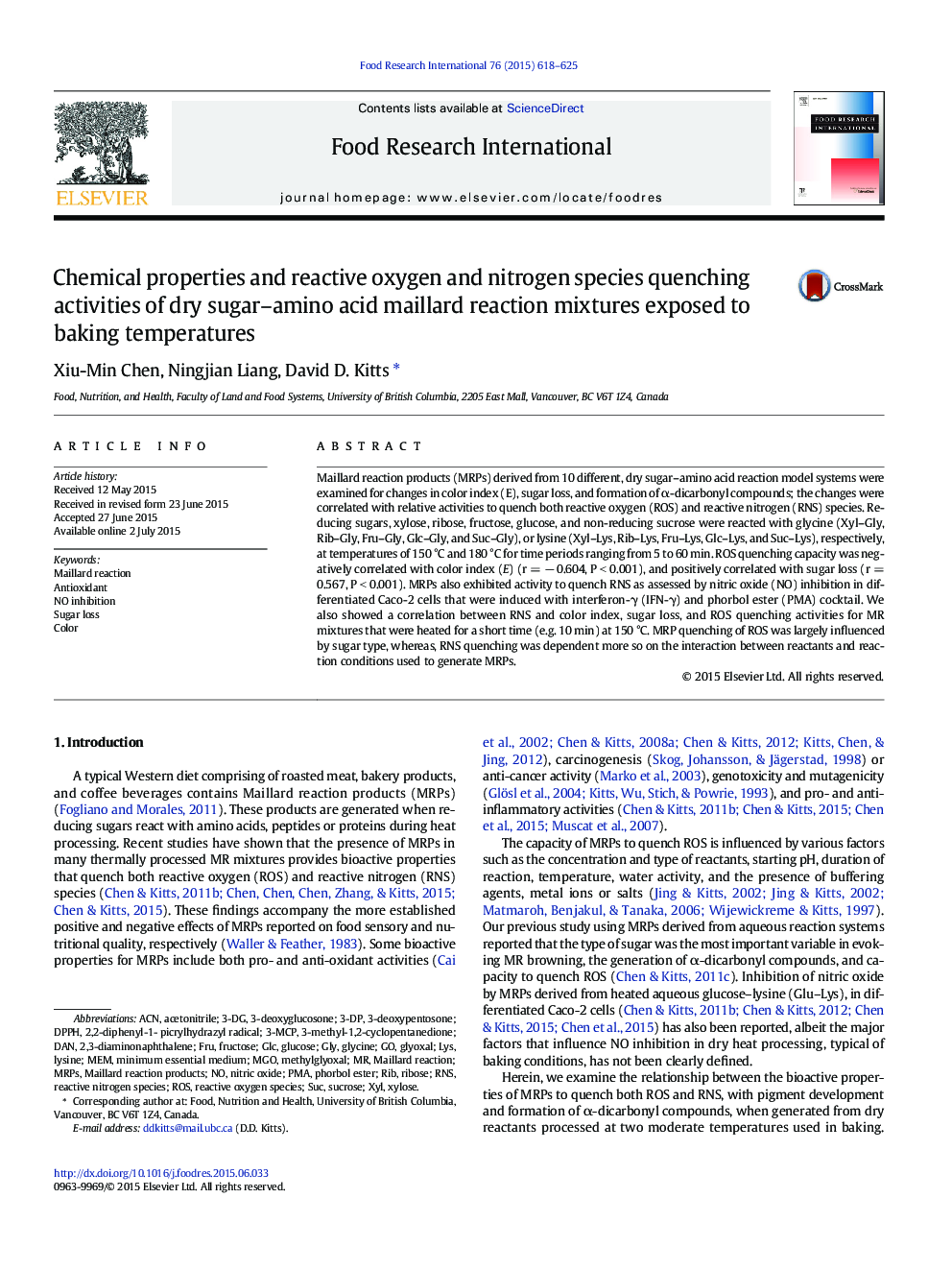| کد مقاله | کد نشریه | سال انتشار | مقاله انگلیسی | نسخه تمام متن |
|---|---|---|---|---|
| 6395199 | 1330649 | 2015 | 8 صفحه PDF | دانلود رایگان |
- ROS quenching capacity was negatively correlated with color change but positively correlated with sugar loss.
- RNS was positively correlated with ROS and sugar loss and negatively correlated with color change.
- MRP inhibition of ROS was influenced mostly by sugar type.
- RNS quenching activity was dependent on the interaction between reactants and reaction conditions used to generate MRPs.
Maillard reaction products (MRPs) derived from 10 different, dry sugar-amino acid reaction model systems were examined for changes in color index (E), sugar loss, and formation of α-dicarbonyl compounds; the changes were correlated with relative activities to quench both reactive oxygen (ROS) and reactive nitrogen (RNS) species. Reducing sugars, xylose, ribose, fructose, glucose, and non-reducing sucrose were reacted with glycine (Xyl-Gly, Rib-Gly, Fru-Gly, Glc-Gly, and Suc-Gly), or lysine (Xyl-Lys, Rib-Lys, Fru-Lys, Glc-Lys, and Suc-Lys), respectively, at temperatures of 150 °C and 180 °C for time periods ranging from 5 to 60 min. ROS quenching capacity was negatively correlated with color index (E) (r = â 0.604, P < 0.001), and positively correlated with sugar loss (r = 0.567, P < 0.001). MRPs also exhibited activity to quench RNS as assessed by nitric oxide (NO) inhibition in differentiated Caco-2 cells that were induced with interferon-γ (IFN-γ) and phorbol ester (PMA) cocktail. We also showed a correlation between RNS and color index, sugar loss, and ROS quenching activities for MR mixtures that were heated for a short time (e.g. 10 min) at 150 °C. MRP quenching of ROS was largely influenced by sugar type, whereas, RNS quenching was dependent more so on the interaction between reactants and reaction conditions used to generate MRPs.
Journal: Food Research International - Volume 76, Part 3, October 2015, Pages 618-625
